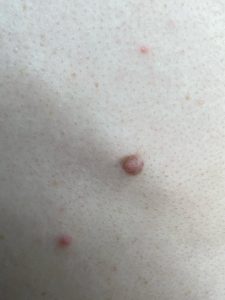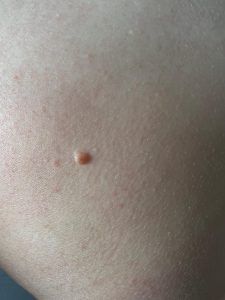Why do we get Moles?
The development of moles is influenced by a combination of genetic factors and sun exposure. Genetics play a significant role; if your parents have many them, you’re likely to have many as well. Additionally, certain gene mutations can predispose individuals to develop more moles, including atypical ones. Atypical moles, are ones that differ in appearance from common moles. They are larger, have irregular shapes, and display a variety of colors rather than a uniform shade. These are often flat or slightly raised, and their borders may be indistinct, blending into the surrounding skin rather than having a clear, well-defined edge.
Sun exposure is another crucial factor in the development of moles. UV radiation from the sun can trigger melanocytes to proliferate, leading to the formation of new ones or the darkening of existing ones. This is why they often appear on sun-exposed areas of the skin, such as the face, neck, back and arms.
While most moles are benign and pose no threat, it’s essential to monitor them for any changes. The “ABCDE” rule—Asymmetry, Border irregularity, Color variation, and Evolving shape or color—can help identify moles that might require medical attention. If a mole displays any of these characteristics or begins to bleed, itch, or become painful, it’s important to consult a dermatologist.
Mole are a natural blemish on the skin, influenced by genetics, sun exposure, and sometimes hormonal changes. While they are usually harmless, keeping an eye on them is paramount and year round sun protection can help maintain the health of your skin.
If you have a mole that you dislike or is causing you bother then firstly get it checked with your GP to ensure the mole is healthy and then book for a consultation with myself via the below link so we can discuss treatment options.



To book your blemish consultation now in either my Colchester or Chelmsford clinic click here.

